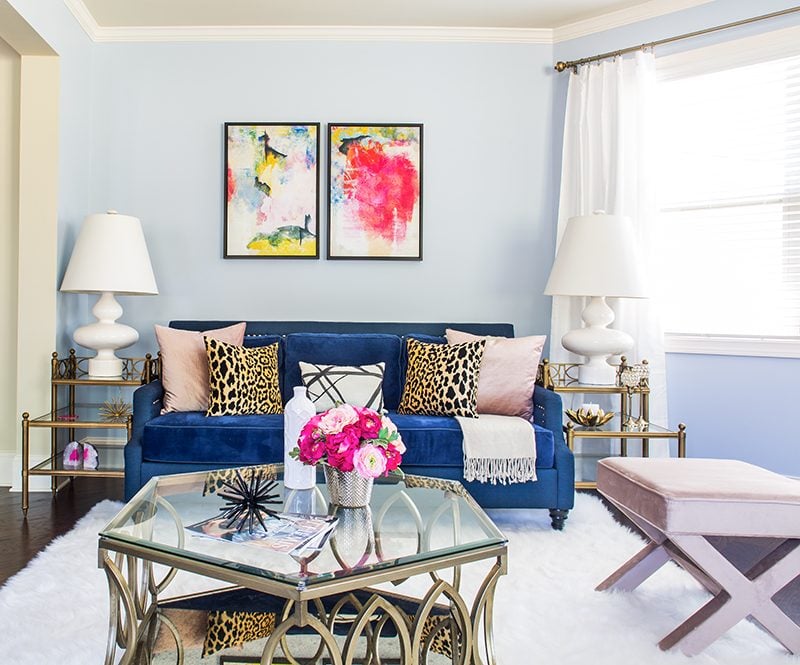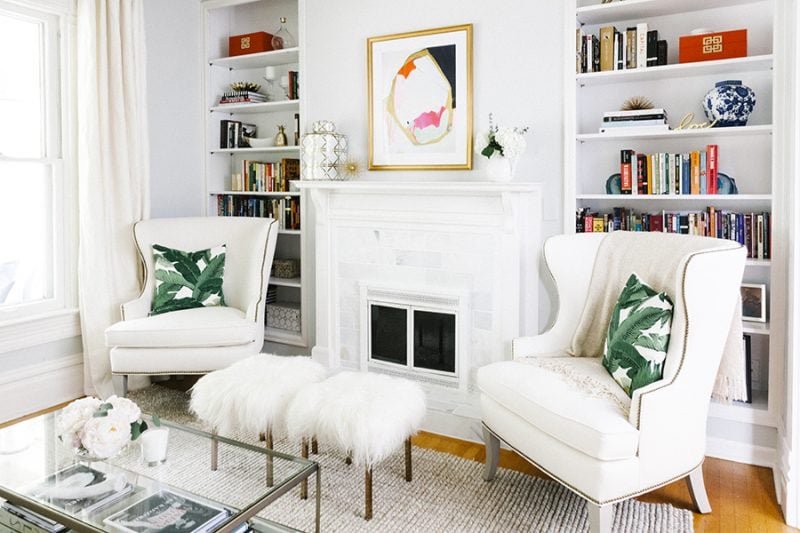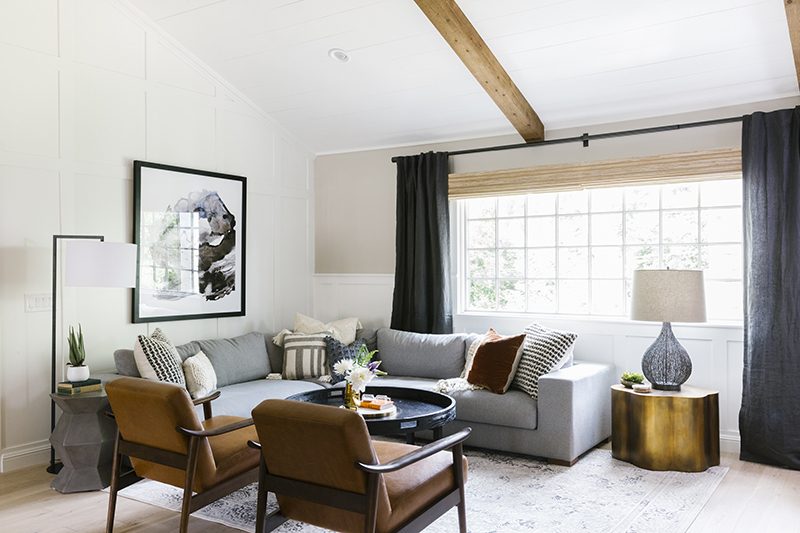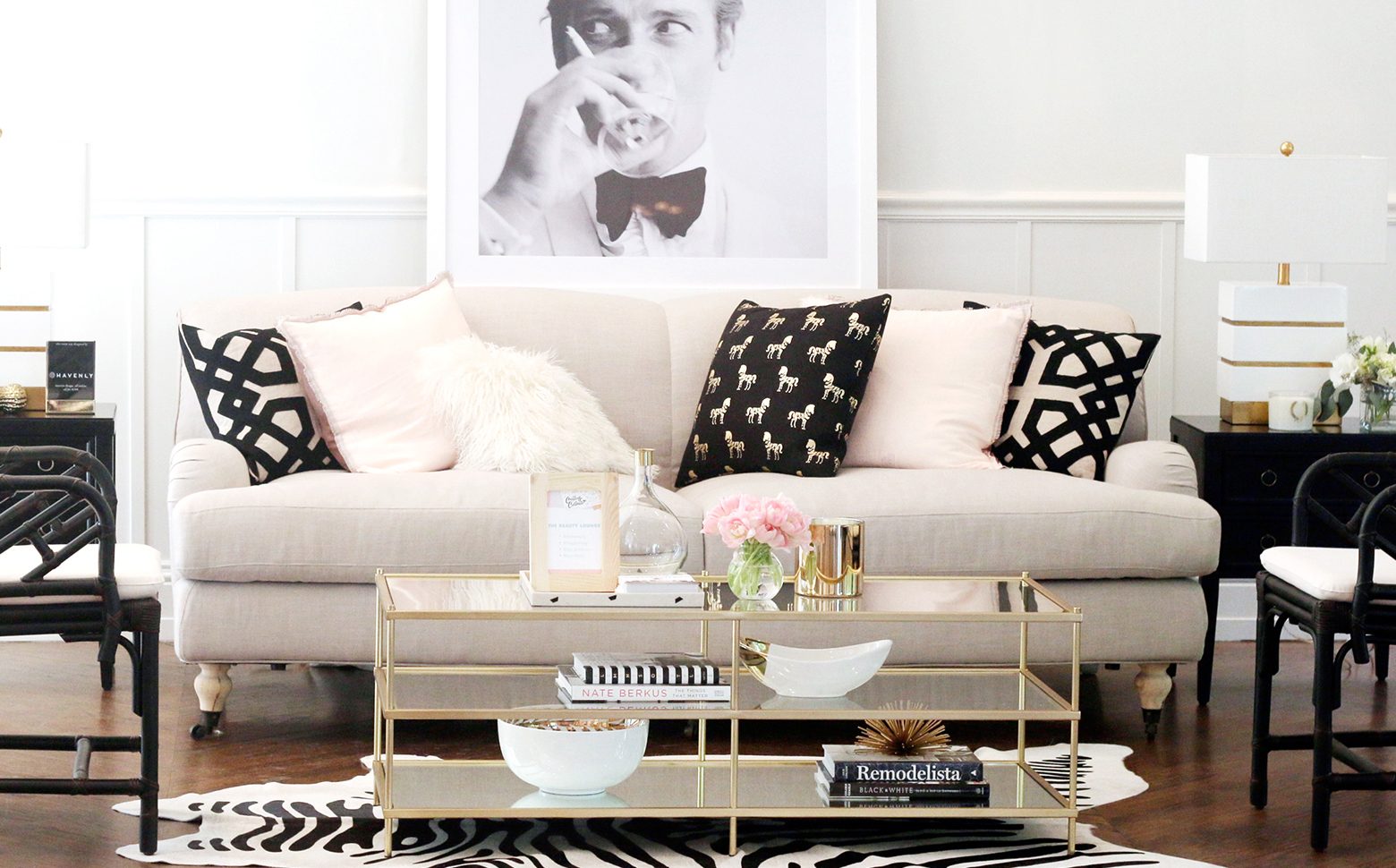Havenly designer Lauren Cox described the power of interior design, how to use color and configure a balanced room, tips and tricks to master scale and proportion, and how to establish rhythm and repetition. While these principles can be found in all designs, your personal style influences how each manifests.

Four Core Styles
There’s so much to say about each style. For now, we’ll focus on the four major style categories and share a bit about how each incorporates the four interior design principles.
Modern
Modern designs value function over form. Everything is stripped down to the basics, so there aren’t many accessories void of purpose. Modern design values sleek, clean lines as well as very simple, neutral color palettes. Bright, bold colors are incorporated sparingly.of Elements of asymmetry add visual interest to these minimalistic spaces. It’s somewhat challenging to accomplish rhythm and repetition because there aren’t many accessories, artwork, or color to work with. To get around this, designers incorporate the same materials throughout a space.
Classic
Classic interior design is very balanced and elegant. Classic designs revolve around simple styling. They rely on symmetry and the simplicity of a neutral color palette. Classic interior designers like to incorporate warm wood tones and sophisticated, natural materials, like ornate linen and silk. They also use repeat intricate patterns to add elegance to the design.
Eclectic
Eclectic interior design is very eye-catching because it brings together a variety of styles in terms of texture, color, shape, and finish. Eclectic interior designers layer vibrant colors and rich patterns. This style tells the story of a space that’s been well-curated over time, which makes it lean more asymmetrical. Rhythm and repetition is the defining principle of this style. Because eclectic design incorporates so much variety, it’s essential to be methodical when adding new pieces. Otherwise, the space will lack cohesion.
Contemporary
Contemporary interior design captures a lot of the transitional styles that live between the above parent design styles. This style incorporates the clean lines and symmetry of modern designs but uses more unique accessories like eclectic designs do. Contemporary design combines neutral colors with bold patterns.

Combining Styles
You will likely find that you’re a combination of design styles. As you pull inspiration from each, make sure that you’re mixing and matching within reason. If you express seven or eight styles in one room, the design will be muddy, and it will be difficult to see the patterns that make a cohesive design.
When combining styles, pair styles from the same parent style. Here are some examples of potential groupings:
- Modern: Mid-century, Minimal, Industrial, Scandinavian
- Classic: Traditional, Transitional, Coastal, Farmhouse
- Eclectic: Bohemian, Global, Rustic
- Contemporary: Glam, Preppy
It is possible to blend across these groupings (for example, modern farmhouse is very trendy right now), but it takes a little more finesse and expertise.

Your Turn!
To determine your design style, start by looking at pictures one Instagram, Pinterest, Houzz, and home magazines. To save yourself a few steps, take our style quiz. Pay attention to what you’re drawn to and what you hate–make sure to be specific.
It’s hard to replicate designs you see online if what you like about it is the beautiful architecture. But, it is possible to create a design that feels custom, even if your space isn’t identical to the inspiration photo.
When looking at images, try to keep your search broad. Be open to the fact that you won’t find all the answers right away. Look at rooms that aren’t necessarily your style and trust the process.
You can learn more about finding your style in Lauren’s free Skillshare class.

